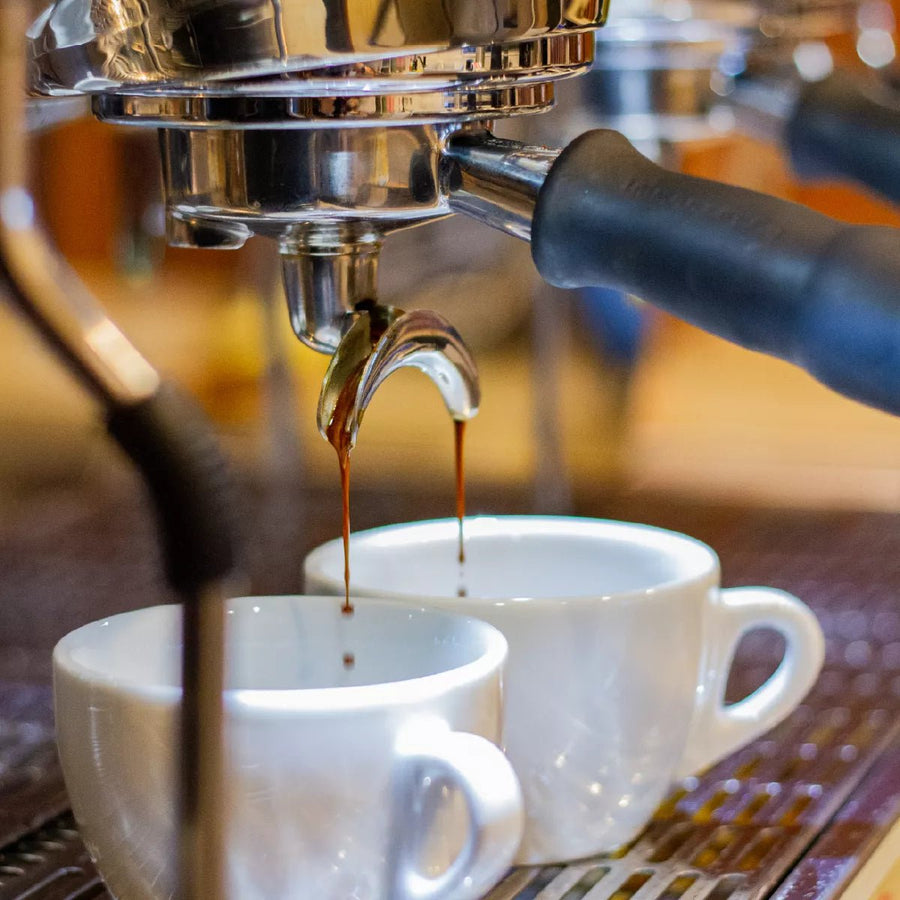Exploring the Abundant Tastes of Coffee Beans: a Deep Study Coffee and Blended Coffee Beans
When you explore the rich flavors of coffee beans, you uncover a complex world where each selection brings its very own character to your mug. As you browse via the art of espresso and the imagination behind blended coffees, you'll begin to value the subtleties that make each sip unique.
The Origins of Coffee Beans: Checking Out Terroir and Flavor Profiles
When you take a sip of coffee, you're not simply appreciating a drink; you're experiencing an abundant tapestry of tastes shaped by the beans' origins. Each region produces special flavor accounts affected by climate, soil, and elevation. As an example, beans from Ethiopia commonly burst with intense, fruity notes, while those from Colombia often tend to offer a balanced, nutty sweetness.
As you discover different beginnings, you'll discover how terroir-- the environmental factors influencing a plant-- plays a vital duty - Single Origin Espresso. The exact same coffee range can taste drastically various relying on where it's expanded
When you think about these factors, you begin to appreciate the complexity behind your cup. Each sip narrates of the land and the farmers that supported the beans. Following time you delight, believe concerning the trip your coffee took before it reached your hands, and appreciate those intricate flavors that mirror its origin.
Comprehending Coffee: The Art and Scientific Research Behind the Mixture
When you think of espresso, it's not almost the solid flavor; it's additionally concerning the techniques that bring it to life. Comprehending how various preparation methods impact preference can change your brewing experience. Let's discover the details of coffee prep work and discover the distinct taste profiles that make each mug special.
Espresso Prep Work Methods
Espresso prep work is both a scientific research and an art, combining specific methods with a deep understanding of coffee. To begin, you'll wish to select premium, newly roasted beans and grind them finely for suitable removal (Single Origin Espresso). The grind dimension is crucial; too coarse, and your espresso will certainly be weak, too fine, and it'll be bitter
Following, tamp the grounds equally in the portafilter to assure uniform extraction. When you lock it into the maker, objective for a brewing temperature level between 190 ° F and 205 °
F.As you pull the shot, watch for the best extraction time-- around 25-30 seconds. The result must be a rich, creamy espresso with a lovely layer of crema ahead. With practice, you'll grasp these strategies.
Flavor Accounts Discussed
The globe of coffee provides an abundant tapestry of taste profiles that can raise your coffee experience. When you take that very first sip, you'll see an equilibrium of resentment, acidity, and sweetness. Each coffee bean carries one-of-a-kind notes, from floral and fruity to nutty and chocolaty. Light roasts typically display intense level of acidity and vivid tastes, while dark roasts existing much deeper, bolder tones.
Recognizing these accounts aids you select the appropriate coffee for your taste buds. Try out various blends can reveal unusual mixes. A well-crafted mix may harmonize the bright notes of an Ethiopian bean with the rich, chocolatey touches of a Brazilian bean. Embrace the trip of discovering espresso's diverse flavors, and you'll transform your coffee routine into an interesting journey.
Processing Techniques: Just How They Impact Flavor and Aroma
While it could seem that the beginning of coffee beans is the most significant aspect in establishing their flavor and fragrance, the processing techniques utilized post-harvest play a just as necessary role. You'll locate that these approaches can considerably change the final taste account of your mug.
As an example, the washed procedure gets rid of the fruit from the beans before fermentation, frequently bring about a cleaner, brighter taste. On the other hand, the all-natural procedure leaves the fruit intact throughout drying out, leading to a sweeter, fruitier account.
Various other approaches, like honey processing, strike an equilibrium, allowing some fruit mucilage to continue to be, supplying an one-of-a-kind complexity.
Each processing strategy interacts with the beans' integral qualities, improving or muting certain tastes and fragrances. When you sip that espresso or mixed coffee, keep in mind that the journey from cherry to mug is influenced not simply by beginning but also by exactly how those beans were processed.
Toasting Techniques: Opening the Full Prospective of Coffee Beans
Roasting strategies are crucial for exposing the complete potential of coffee beans, as they transform raw, environment-friendly beans right into the fragrant, flavorful coffee you take pleasure in. The choice of toasting technique-- light, medium, or dark-- significantly influences taste accounts. Light roasts protect the beans' all-natural acidity and fruity notes, while medium roasts equilibrium sweetness and splendor. Dark roasts, on the various other hand, stress strong, great smoky flavors.
You can explore roasting times and temperatures to locate your best mixture. A slower roast at lower temperatures allows for intricate flavors to establish, while a quicker roast can heighten resentment. Take note of the cracks during toasting; the first split suggests a light roast, while the second split signals a dark roast. By grasping these techniques, you'll reveal a globe of taste, elevating your coffee experience to new elevations. Delight in every sip, recognizing the care that entered into your mug!
The Magic of Blended Coffee: Developing One-of-a-kind Taste Experiences
Producing a distinct taste experience with combined coffee can transform your morning routine right into an exploration of taste. By incorporating various beans from different areas, you can reveal a symphony of flavors that raise your cup to brand-new heights. Each blend deals a distinct profile, balancing sweetness, body, and acidity to create something really special.
When you choose a mix, you're not simply choosing a coffee; you're picking a trip throughout diverse landscapes and societies. Trying out different mixes enables you to find your personal faves, whether you appreciate fruity notes or abundant, chocolatey undertones.

Sampling Notes: Identifying the Subtleties in Your Cup
As you sip your coffee, you could see a range of flavors dancing on your palate, each revealing the ins and outs of the beans. You might taste the bright level of acidity similar to citrus or the deep, abundant notes akin to dark delicious chocolate. The sweetness might stimulate honey or caramel, balancing the overall profile beautifully.
Pay focus to the body of the coffee-- does it feel airy and light, or is it complete and creamy? The surface, too, uses ideas; a lingering aftertaste might mean nuttiness or flower touches.

Don't fail to remember to discover the unique features of various origins, as each area gives distinctive tastes - Single Origin Espresso. For example, Ethiopian coffees usually existing fruity notes, while Colombian beans may display a more rounded sweetness. By identifying these subtleties, you'll grow your appreciation for every cup, elevating your coffee experience to brand-new heights

Developing Methods: Maximizing Flavor Extraction for every single Bean
When you discover the numerous developing methods, you'll find that each strategy can considerably influence the taste account of your coffee. From French press to pour-over, each approach removes different substances, enhancing or muting details notes. Making use of a French press allows oils to remain in the mixture, developing a richer preference, while pour-over stresses clearness and brightness.
Temperature and grind size additionally play vital roles. A coarser work functions best for cold brews, while a fine grind is perfect for coffee. Exploring with water temperature level-- between 195 ° F and 205 ° F-- can expose surprise tastes, too.
Do not forget steeping time; a quick extraction can cause sour notes, while over-extraction may generate anger. By adjusting these variables, you can take full advantage of taste extraction and really elevate your coffee experience. Appreciate the journey of discovering what approach finest matches your taste!
Regularly Asked Questions
What Is the Ideal Water Temperature Level for Developing Coffee?
The suitable water temperature level for developing coffee's in between 195 ° F and 205 ° F. If you use water that's too warm, you'll over-extract tastes; too chilly, and you will not remove sufficient. Aim for that sweet spot for the very best brew!
Just How Does Work Dimension Impact Coffee Taste?
Grind dimension considerably impacts coffee flavor. Finer grinds essence much more flavors and oils, leading to a bolder preference, while coarser grinds return a lighter flavor. Changing work dimension assists you accomplish your desired coffee account.
Exist Health Conveniences Linked With Drinking Coffee?

What Is the Difference In Between Arabica and Robusta Beans?
Arabica beans are smoother and sweeter, often including fruity tastes, while robusta beans are more powerful with a bitter preference and higher high levels of caffeine content. You'll see these differences in scent and brewing experience.
How Can I Store Coffee Beans for Quality?
To store coffee beans for freshness, keep them in an impermeable container, away from light, heat, and wetness. You'll preserve their taste much longer if you only grind what you require right before developing.
Checking Out the Rich Flavors of Coffee Beans: a Deep Dive Into Coffee and Blended Coffee Beans.
When you explore the abundant flavors of coffee beans, you uncover a complicated globe where each variety brings its own personality to your mug.When you take a sip of coffee, you're not simply appreciating a drink; you're experiencing an abundant tapestry of tastes formed by the beans' beginnings.Roasting techniques are essential for exposing the full potential of coffee beans, as they change raw, environment-friendly beans into the aromatic, flavorful coffee you take pleasure in.As you drink your coffee, you may notice a spectrum of flavors dancing on your taste buds, each revealing the intricacies of the beans.
 Scott Baio Then & Now!
Scott Baio Then & Now! James Van Der Beek Then & Now!
James Van Der Beek Then & Now! Daryl Hannah Then & Now!
Daryl Hannah Then & Now! Morgan Fairchild Then & Now!
Morgan Fairchild Then & Now! McKayla Maroney Then & Now!
McKayla Maroney Then & Now!